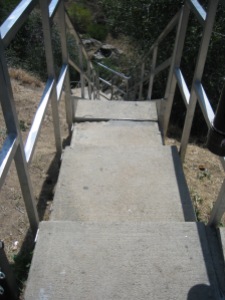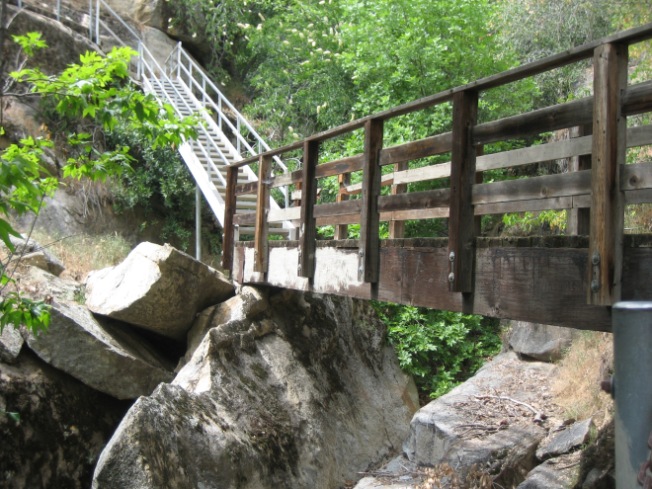Hemp’s been on my mind lately, as I am making and selling jewelry made from the fiber. A couple of years ago, I did some research and wrote down hemp talking points so I could share information with people who were curious or had misconceptions about it. I’ll share that information here, along with new details I recently learned.
Many people think hemp is the same as marijuana and can get a person high. (Read about my experiences with people who want to know if they can get high from my hemp jewelry here: https://throwingstoriesintotheether.wordpress.com/2015/04/17/can-you-smoke-it and here: http://www.rubbertrampartist.com/2015/12/09/selling-hemp-again/
A state of Colorado website (https://www.colorado.gov/pacific/agplants/difference-between-hemp-and-marijuana), defines
Industrial hemp as ‘a plant of the genus Cannabis and any part of that plant, whether growing or not, containing a Delta-9 tetrahydrocannabinol (THC) concentration of no more than 0.3% on a dry weight basis.
According to an article in The New York Times (http://www.nytimes.com/2015/07/07/nyregion/cannabis-construction-entrepreneurs-use-hemp-in-home-building.html?_r=0), “That is compared with 5 to 10 percent [of THC) found in the hallucinogenic and medicinal varieties.” When comparing hemp and marijuana in the same article, James Savage, who started a company to create building materials derived from cannabis, said
“It’s like the difference between a wolf and a poodle… Same species, totally different animal.”
(The same comparison was made in the documentary Bringing It Home, which I highly recommend to anyone interested in learning a whole lot more about industrial hemp. To learn more about Bringing It Home, go to bringingithomemovie.com. To watch the movie’s trailer and to purchase or rent online streaming, go here: https://vimeo.com/ondemand/bringingithomemovie.)
Even though hemp and marijuana both come from Cannabis sativa L., the varieties that make industrial hemp products and those that produce marijuana are distinctly, scientifically different and are cultivated in different ways. Hemp products such as the cord used to make jewelry comes from the outer filaments of hemp plants, while marijuana comes from the flowers and leaves of a different variety of plants.
Despite these differences, in recent years, The United States has been the only industrialized nation to refuse to distinguish hemp from marijuana. Because of this refusal to distinguish the two plants, when folks ask me where I get my hemp cord, I have to explain it is imported from another country because hemp is not legally grown and processed in the U.S. According to http://www.hempuniversity.com/hemp-university/growing-hemp/countries-growing-hemp/, some of the countries growing hemp that might be made into the cord I use include Hungary, India, and Poland.
The U.S. is (slowly) beginning to distinguish hemp from marijuana. According to https://www.google.com/search?q=which+u.s.+states+allow+licensure+to+grow+hemp&ie=utf-8&oe=utf-8, “Six states (Hawaii, Kentucky, Indiana, Minnesota, North Dakota, Tennessee) in 2015 had hemp research crops in accordance with section 7606 of the Farm Bill and state law. Three states (Colorado, Oregon and Vermont) in 2015 licensed or registered farmers to grow hemp under state law.”
Once Colorado legalized recreational marijuana use, many people assumed I was now getting my hemp cord directly from that state. According to http://www.hempuniversity.com/hemp-university/growing-hemp/countries-growing-hemp/,
In 2013, after the legalization of marijuana in the state, several farmers in Colorado planted and harvested several acres of hemp, bringing in the first hemp crop in the United States in over half a century.
However, just because the state of Colorado registers hemp growers and inspects their crops to make sure the THC levels are no greater than 0.3%, a statement from the Colorado Industrial Hemp Program in February of 2014 (https://www.colorado.gov/pacific/agplants/industrial-hemp) says
The State of Colorado has no jurisdiction over many other factors that producers are faced with. While Colorado legalized the production of Industrial Hemp (Cannabis spp), growing it is still considered illegal by the Federal Law.
The following issues may cause concern for those interested in growing this crop in Colorado.
-
Seed Procurement/Seed Quality – Seed that exists in Colorado may be variable and have unknown THC levels…Importation of viable industrial hemp seed across State lines and Country boundaries is illegal under the Federal Controlled Substances Act. [Hemp seeds already in Colorado may be too strong to be legal. It’s illegal to bring hemp seeds across state lines and into Colorado.]
-
Pesticides – There are not any pesticides (herbicides, insecticides, fungicides, etc.) currently registered for use on…Industrial Hemp [sic]…due to the predominant federal nature of pesticide regulation.
-
Federal farm programs such as crop insurance, farm loans and conservation reserve may be jeopardized if industrial hemp is planted… [A farmer might literally lose the farm for growing hemp.]
-
Banking – … banks including state-chartered banks may be reluctant to provide services to Cannabis growers for fear of being prosecuted for federal laws and regulations violations. [Farmers growing hemp might not be able to get loans.]
-
Processing – Colorado’s industrial hemp rules state that industrial hemp producers must provide documentation of in state processing as part of registration. It is unknown at this time how many processing facilities will be available in Colorado at time of harvest. [Hemp farmers can’t be registered if they can’t show their hemp will be processed in the state. Hemp processing facilities may not exist in Colorado when the hemp is harvested.)
So, no, just because hemp is being grown (legally by state law, but illegally by federal law), in Colorado does not mean I can pick up cord made from hemp grown there. I will be totally happy when I can buy cord from hemp grown and processed in the United States, but that day has not yet come.
Hopefully the days of domestic hemp production comes soon, because hemp is a great crop for many reasons.
A hemp crop grows to maturity in about 100 days and produces three to six tons of dry fiber per acre. Hemp plants reach heights of six to twelve feet.
Hemp cord is made from hemp fibers, the long, strong outer filaments of the hemp plant. This fiber is the strongest and one of the most durable natural fiber known. Hemp also has better anti-bacterial properties than any other natural fiber, making it extremely resistant to mold, mildew, and rot. Finally, hemp is flame retardant and is not affected by UV rays.
Hemp is an environmentally friendly crop. Hemp plants flourish with minimal use of pesticides, herbicides, or fungicides. Hemp is planted tightly together with no room or light leftover for weed growth.
Not only does hemp grow well without chemicals, it also improves the soil. A large percentage of nutrients that hemp uses for growth are returned to the soil when the leaves fall, reducing the need for fertilizers and increasing the quality of the soil. Growing industrial hemp restores PH balance to soil and enables other crops to grow on soil that has been acidified by acid rain.
Evidence suggests that hemp cultivation can lift heavy metals from polluted soil. Hemp cleans the soil by absorbing and trapping pollutants ranging from radiation and pesticides to toxins leaching from landfills. According to http://www.hempuniversity.com/hemp-university/growing-hemp/countries-growing-hemp/, Poland has “demonstrated the benefits of using hemp to cleanse soils contaminated by heavy metals,” but gives no further information.
During my research, I found researcher Przemyslaw Baraniecki was associated with these assertions about the soil cleansing properties of hemp. I did not find any information–or at least no information I could understand–explaining how exactly, scientifically, hemp absorbs and traps pollutants. Also, if hemp absorbs and traps pollutants, does that mean those pollutants are present in the end product made from hemp? I don’t know if I want to wear a necklace or a t-shirt made from hemp full of radiation or pesticides or toxins. Hopefully the hemp neutralizes pollutants, but as I am not a scientist, I’m not sure how exactly that would work.
Finally, not only is hemp drought resistance, hemp crops use a lot less water than other crops grown for similar purposes. For example, while cotton requires about 1400 gallons of water for every pound produced, the production of an equivalent amount of hemp requires about half the amount of water. Also, ” hemp produces about 200% – 250% more fibre [sic] in the same amount of land compared to cotton.” (Information in this paragraph from http://www.collective-evolution.com/2013/07/17/hemp-vs-cotton-the-ultimate-showdown/.)
I hope I’ve increased your knowledge of hemp. I also hope you will choose hemp next time it is an option.
When I looked at my original talking points, I found that I had not attributed a source to each piece of information. I do however, have a list of sources [website links] from which I gathered the facts.
www.puresativa.com/article.php?article=67
www.bringingithomemovie.com/industrial-hemp
https://www.sativabags.com/HempInfo
Two of the links in my notes were no longer valid. One was totally useless, so I didn’t include it. I couldn’t get to the specific link of the second one, but I was able to give the site’s homepage. Sources for new information are included in the body of the text.







